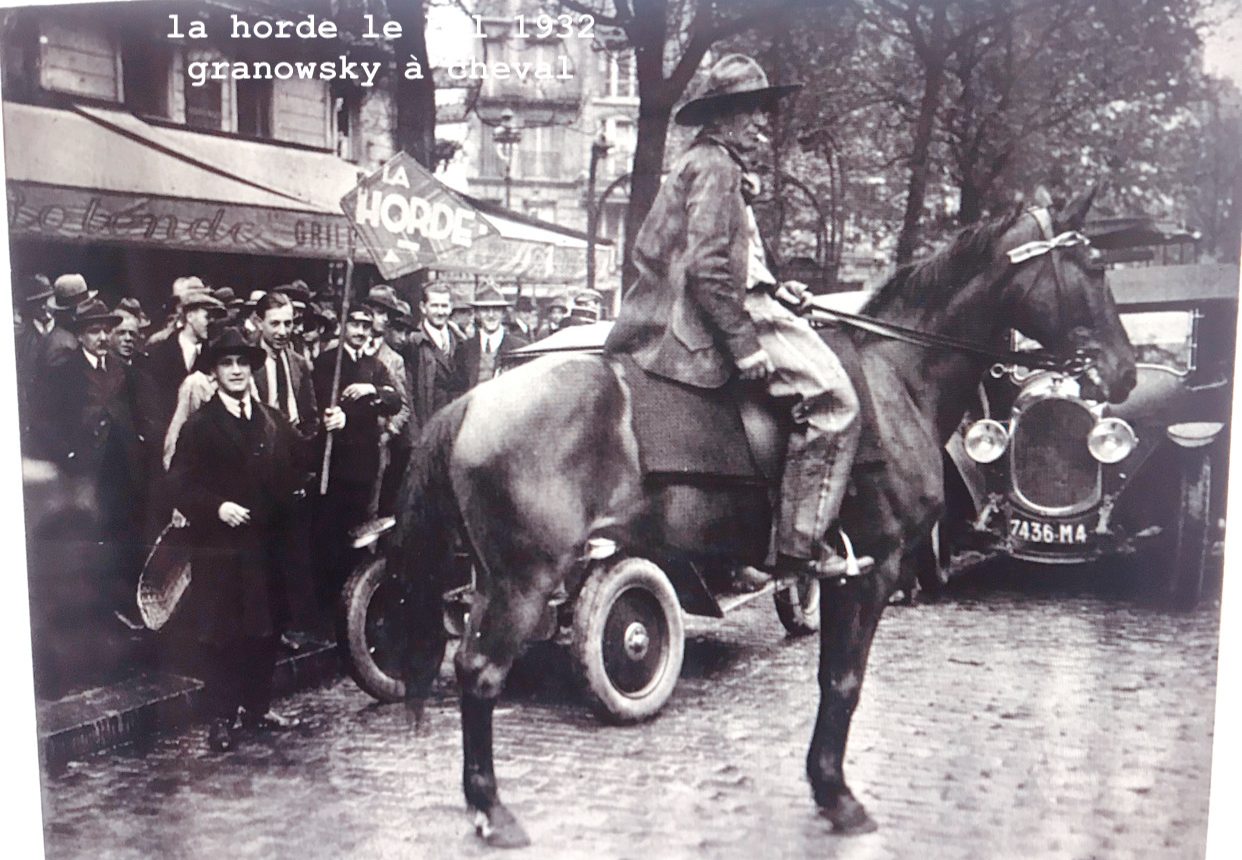Leopold GOTTLIEB
January 2, 2019Julius GRAUMANN
January 2, 2019Samuel GRANOWSKY
EKATERINOSLAV (UKRAINE) 1889 – DEPORTED TO AUSCHWITZ 1942
Samuel Granowsky left his family to study painting at the Academy of Fine Arts in Odessa. He continued his training in Munich and in Paris, where he settled in 1909. He was a tall and handsome man, and worked as a “model” at the Académie de la Grande Chaumiere. He also earned his living by working as a cleaner at the café La Rotonde. In Montparnasse, he drew attention to himself because of his eccentric behavior: he strode along the streets wearing a bright-colored shirt and a Texan hat, which he wore when he was an extra in the shooting of a movie. Together with his female companion Aicha, the famous mixed-race model of Montparnasse, he was an emblematic figure of that time. He was nicknamed “the cowboy of Montparnasse.” He depicted scenes of Parisian life as well as traditional Russian figures, fairs, and musicians. He also painted portraits, nudes, and wildlife paintings. He was renowned for the eclectic character of his art: mural fresco for private individuals, paintings on furniture, screens, and sculptures. He mainly worked with pastels and painted with a palette knife. During the war, Sam Granowsky stayed in Paris. On July 17, 1942, he was arrested by the French police during the Vel d’Hiv roundup. He was interned in Drancy and was deported on convoy number 9 on July 22, 1942. He was murdered in Auschwitz.
Stories of Jewish Artists of the School of Paris 1905-1939
FRENCH-ENGLISH
Capitale des arts, le Paris des années 1905-1939 attire les artistes du monde entier. De cette période de foisonnement, un terme est resté, celui d'Ecole de Paris, qui recouvre une grande diversité d'expression artistique. Dans ce brassage dont Montparnasse est le creuset, un groupe se distingue : celui des artistes juifs venus de Russie, de Pologne et d'Europe centrale. Si leurs styles sont variés, un destin commun les rassemble : ils fuient l'antisémitisme de leur pays d'origine. Certains ont connu la célébrité dès les années 1920, tels Soutine, Lipchitz ou Chagall. D'autres n'ont pas eu le temps ou la chance d'y accéder. Près de la moitié a péri dans les camps de concentration nazis.
From 1905 to 1939, Paris attracted artists from all over the globe as the capital of the art world. This period of artistic proliferation became known as the School of Paris, and includes a great diversity of artistic expression. Within the teeming art world centred on Montparnasse, one group set itself apart: Jewish artists from Russia, Poland, and Central Europe. Although their styles were diverse, they shared the common fate of fleeing anti-Semitic persecutions in their home countries. Some became famous in the 1920s, such as Soutine, Lipchitz, and Chagall, while others did not have the time or the luck to gain renown. Nearly half of these artists died in Nazi concentration camps.





